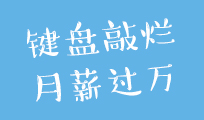遍历一个文件中的每一行
必须导入scala.io.Source类: import scala.io.Source
方法一: 使用Source.getLines返回的迭代器
val source = Source.fromFile("test.txt", "UTF-8")
val lineIterator = source.getLines
for (line <- lineIterator) println(line)方法二: 将Source.getLines返回的迭代器,转换成数组
一个BufferedSource对象的getLines方法,只能调用一次,一次调用完之后,遍历了迭代器里所有的内容,就已经把文件里的内容读取完了
如果反复调用source.getLines,是获取不到内容的
此时,必须重新创建一个BufferedSource对象
val source = Source.fromFile("test.txt", "UTF-8")
val lines = source.getLines.toArray
for(line <- lines) println(line)方法三: 调用Source.mkString,返回文本中所有的内容
val source = Source.fromFile("test.txt", "UTF-8")
val lines = source.mkString使用完BufferedSource对象之后,调用BufferedSource.close方法,关闭IO流资源
遍历一个文件中的每一个字符
BufferedSource,也实现了一个Iterator[Char]的这么一个trait
val source = Source.fromFile("test.txt", "UTF-8")
for(c <- source) print(c)从URL以及字符串中读取字符
val source = Source.fromURL("http://www.baidu.com", "UTF-8")
val source = Source.fromString("Hello World")结合Java IO流,读取任意文件
import java.io._
val fis = new FileInputStream(new File("test.txt"))
val fos = new FileOutputStream(new File("test1.txt"))
val buf = new Array[Byte](1024)
fis.read(buf)
fos.write(buf, 0, 1024)
fis.close()
fos.close()结合Java IO流,写文件
val pw = new PrintWriter("test2.txt")
pw.println("Hello World")
pw.close()递归遍历子目录
def getSubdirIterator(dir: File): Iterator[File] = {
val childDirs = dir.listFiles.filter(_.isDirectory)
childDirs.toIterator ++ childDirs.toIterator.flatMap(getSubdirIterator _)
}
val iterator = getSubdirIterator(new File("Desktop"))
for(d <- iterator) println(d)序列化以及反序列化(Java序列化和反序列化机制)
如果要序列化,那么就必须让类,有一个@SerialVersionUID,定义一个版本号 要让类继承一个Serializable trait
@SerialVersionUID(42L) class Person(val name: String) extends Serializable
val leo = new Person("leo")
import java.io._
val oos = new ObjectOutputStream(new FileOutputStream("test.obj"))
oos.writeObject(leo)
oos.close()
val ois = new ObjectInputStream(new FileInputStream("test.obj"))
val restoredLeo = ois.readObject().asInstanceOf[Person]
restoredLeo.name
 编程那点事
编程那点事


